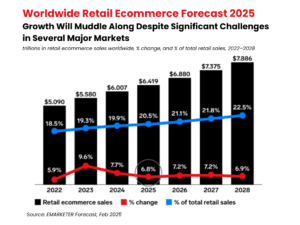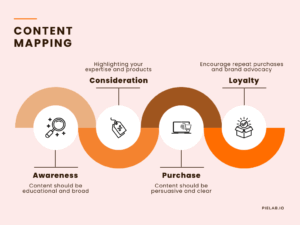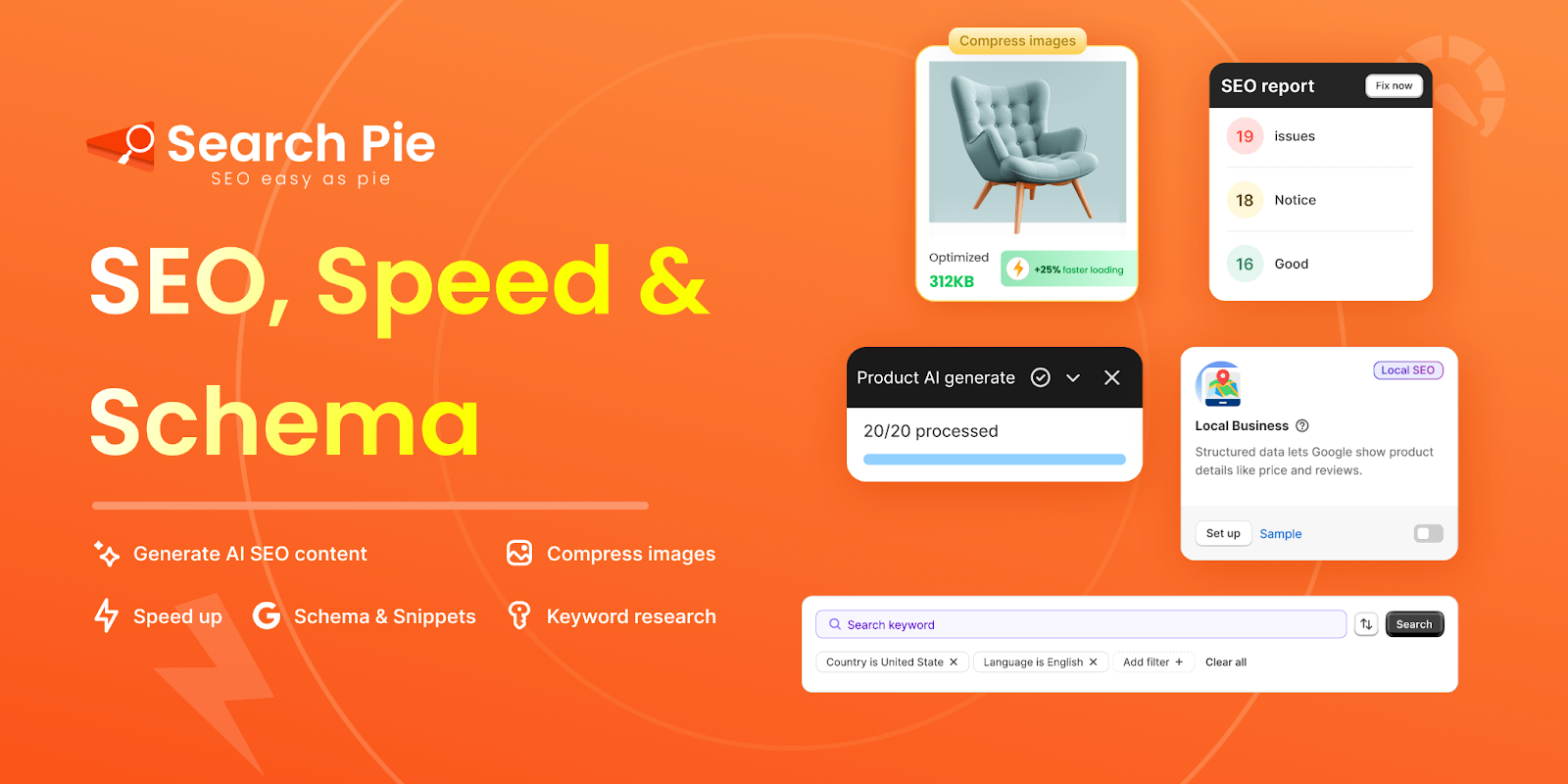With global online retail sales projected to hit an estimated nearly $6.5 trillion in 2025, the opportunity for growth is massive, but so is the competition. To claim your piece of this market and increase ecommerce traffic, a high-impact ecommerce content marketing strategy is non-negotiable.

Your strategy must go beyond simple ads. To stand out, you need to deliver the best content for ecommerce at every stage of the buyer’s journey. This comprehensive approach, often referred to as ecommerce content marketing, uses everything from expert articles and persuasive case studies to compelling ecommerce content writing for product pages.
In this article, you’ll learn how to build a winning ecommerce content marketing strategy, explore real-world examples, and uncover actionable steps to boost traffic, build trust, and maximize sales for your online store.
What is Ecommerce Content Marketing?
Content marketing is fundamentally about moving beyond intrusive advertising to build genuine relationships through value. It uses expertise, insights, and storytelling to establish trust and authority with your audience, positioning your brand as a reliable partner in the buying process.
In the competitive world of ecommerce, this means strategically creating and distributing high-value assets, encompassing blog posts, instructional videos, persuasive product descriptions, or comprehensive buying guides. This content must directly address customer interests and purchasing intent. When executed well, this approach not only attracts and engages shoppers but also effortlessly guides them toward conversion, ensuring your brand achieves meaningful differentiation in a crowded digital marketplace.
Why is Content Marketing Important in Ecommerce Industry?
With millions of online stores competing for attention, simply having a website is no longer enough. Shoppers today expect more than just products, they expect useful information, authentic engagement, and a seamless experience that helps them make confident purchasing decisions. This is where a strong ecommerce content strategy becomes indispensable.
A thoughtfully planned content strategy does much more than just boost traffic. It’s the engine that builds your brand’s authority, nurtures customer trust, and firmly establishes you as the reliable voice in your niche. With nearly 38% of marketers prioritizing the customer experience and almost 29% focusing on content that aligns with their brand’s values, according to Hubspot, it’s clear where the industry is moving. When customers can consistently find valuable answers or detailed product guidance from your business, they are significantly more likely to choose you over a competitor.
Top 5 Types of Ecommerce Content Marketing
Building an effective ecommerce content marketing strategy starts with understanding which types of content best attract, engage, and persuade online shoppers. Different stages of the buyer’s journey require different approaches, and the best content for eCommerce balances education, trust, and conversion. Here are some proven formats:
1. Blog Posts and Buying Guides
Well-researched blog posts and step-by-step buying guides are among the most effective forms of content marketing for eCommerce sites. They answer customer questions, showcase expertise, and improve SEO visibility by targeting long-tail keywords. For example, a skincare brand could publish guides like “How to Choose the Right Moisturizer for Dry Skin,” offering both value and a natural segue to products.
2. Product Descriptions and Category Pages
A clear and persuasive ecommerce content writing on product and category pages can directly influence conversions. Detailed descriptions, feature comparisons, and keyword-optimized copy not only guide shoppers but also enhance search engine rankings. Optimized product copy is one of the simplest ways to increase ecommerce traffic and sales simultaneously.
3. Case Studies and Testimonials
Trust is crucial in digital commerce. Therefore, content marketing in ecommerce often relies on social proof such as case studies, customer stories, and testimonials that demonstrate how real people benefit from your products. These serve as powerful ecommerce content marketing examples that build credibility and influence purchasing decisions.
4. Videos, Tutorials, and Demos
Visual content is a cornerstone of content commerce. Short product videos, tutorials, or unboxing demos help customers visualize what they’re buying. This type of content for ecommerce websites not only increases engagement but also reduces hesitation, making it easier for shoppers to complete a purchase.
5. Educational Resources and FAQs
Creating in-depth resources like FAQs, eBooks, or comparison charts is another ecommerce content marketing strategy that builds authority. By addressing common pain points or questions, brands can attract organic search traffic and guide shoppers toward confident purchasing decisions.
What Makes a Great Ecommerce Content Marketing Strategy?
Simply publishing content isn’t enough to win in today’s digital retail landscape. To move beyond the noise, you need a powerful differentiator. The key is implementing a systematic ecommerce content marketing strategy, a framework that goes far beyond basic blogging. What core principles ensure your content for ecommerce is not just seen, but actively converts visitors into buyers?
1. Clear Understanding of Customer Intent
Great content marketing for ecommerce starts with knowing your audience inside and outside, including their key pain points, motivations, and buying behaviors. By tailoring content for ecommerce websites to real customer needs, you ensure every piece, from an article to a product description, serves a clear, purposeful goal: educating, persuading, or converting.
2. Seamless Alignment with the Buyer’s Journey
The most effective ecommerce content marketing strategies meticulously address every stage of the sales funnel. Educational blog posts attract new visitors, detailed buying guides and comparison pages help them evaluate options, and perfectly optimized product descriptions and FAQs remove final barriers to purchase. This structured approach guides shoppers seamlessly from initial curiosity to final conversion.
3. High-Quality, Originality, and Authority
The best content for ecommerce is not just keyword-rich, but it also needs to be unique, insightful, and genuinely useful. Search engines heavily reward originality, and customers remember value. Whether through expert ecommerce content writing, engaging video tutorials, or in-depth case studies, the primary goal is to publish authoritative content that your competitors simply cannot replicate.
4. Consistency and Strategic Distribution
Even the most brilliant content won’t succeed without strategic consistency. A winning content marketing strategy for ecommerce ensures a steady flow of high-value blogs, product updates, and resources, supported by smart distribution across channels like email, social media, and search. This systematic approach maintains brand visibility and keeps you top-of-mind.
5. Data-Driven Optimization for ROI
Finally, the strongest content marketing in ecommerce is rigorously built on data. By tracking performance, what increases engagement, what boosts SEO, what drives conversions, you can continuously refine your strategy for maximum impact. Brands that excel in content commerce use analytics to shape smarter decisions, ensuring the highest possible return on investment (ROI).
How to Create a Successful Content Marketing Strategy for Ecommerce Brands
Crafting a strong ecommerce content marketing strategy requires far more than occasional blogging or updating product copy. It means implementing a structured, repeatable framework that aligns with your business goals, truly engages your target audience, and drives measurable, sustainable growth.
Here is the essential, step-by-step framework for creating high-converting ecommerce content marketing strategies:
1. Audience Research
As mentioned above, the foundation of any successful strategy is a deep understanding of your customers. Start by analyzing their demographics, pain points, and buying behaviors to clearly comprehend customer profiles. You need to know not only who they are, but what problems they’re trying to solve and what motivates their purchasing decisions. Use surveys, social media insights, and customer feedback to build detailed buyer personas that represent your ideal customer.
2. Content Mapping
Once you understand your audience, you can map content to each stage of their journey. This ensures you’re providing the right information at the right time.

- Awareness: At this stage, customers are identifying a problem. Your content should be educational and broad, such as blog posts, articles, and guides that answer their initial questions and introduce them to your brand.
- Consideration: Here, customers are researching solutions. Your content should highlight your expertise and products through comparison pages, case studies, product reviews, and video demos.
- Purchase: This is the point of conversion. Content should be persuasive and clear, including optimized product pages, detailed descriptions, and user testimonials.
- Loyalty: After a sale, you want to build a long-term relationship. Use content like how-to guides, customer success stories, and email newsletters to encourage repeat purchases and brand advocacy.
3. Platform Selection
Choosing the right distribution channels is critical for getting your content in front of your audience.
- Website: Your website should be the hub for all your long-form content, including blogs, guides, and product pages.
- Social Media: Use social channels to promote and share bite-sized content like images, infographics, and short-form video clips to drive traffic back to your site.
- Email: Build a list and use email newsletters to nurture leads, announce new content, and offer exclusive promotions.
4. SEO Optimization
For your content to be found, it must be search-friendly. This step focuses on creating content that ranks well and drives organic traffic.
- Keyword research: Identify high-intent search terms your audience uses.
- On-page optimization: Integrate these keywords naturally into your titles, headers, and body text.
- Internal Linking: Link from your blog content to relevant product and category pages to improve site navigation and link equity.
5. Performance Measurement
Finally, track your results to see what’s working and what isn’t. Use analytics tools to monitor key metrics.
- Organic Traffic: How many visitors are coming from search engines?
- Conversions: Which content pieces are leading to sales?
- Engagement: What content is getting the most likes, shares, and comments?
Best Content Marketing Examples That Drive Ecommerce Results
One of the most effective ways to understand the impact of content marketing in ecommerce is to look at real-world examples. Successful brands show how the right ecommerce content marketing strategies can increase traffic, improve customer engagement, and drive revenue growth. Here are some standout eCommerce content marketing examples:
1. Dollar Shave Club: Mastering Viral Video
Dollar Shave Club (DSC) wasn’t the first company to offer a razor subscription, but their content was groundbreaking.
The Content Strategy: The company launched with a single, two-minute viral video featuring founder Michael Dubin, who was irreverent, self-deprecating, and clear about the value proposition. The video was highly polished but felt authentic, directly addressing the pain point of overpriced razors.
Key Takeaways:
- Focus on the Pain Point: The content led with the customer’s frustration, not the product features.
- Entertainment Over Promotion: The video was so funny and memorable that people shared it simply because they were entertained, giving DSC massive free exposure.
The Results: The launch video received nearly 5 million views in its first 90 days. The strategy was so successful that DSC was ultimately acquired by Unilever for $1 billion.
2. The Sill: SEO for Organic Growth
The Sill, an online plant delivery company, faced the challenge of having a highly visual product but needing to drive traffic through non-branded search terms.
The Content Strategy: They focused on SEO-optimized, long-tail blog content that answered specific customer questions. This included articles like “Best Plants for Low Light” and “How to Care for Succulents in Winter.” This created a massive content library that served as an educational hub.
Key Takeaways:
- Educational Content is Evergreen: Their content is valuable year-round, generating passive organic traffic long after publication.
- Target High-Intent Keywords: By targeting phrases like “best plants for X,” they captured users in the Awareness and Consideration stages of the buyer journey.
The Results: By leveraging a focused SEO strategy and fixing site performance issues, The Sill saw a significant 45% boost in organic traffic, converting highly informed visitors into buyers.
3. ASOS: Fueling User-Generated Content (UGC)
ASOS, a major online fashion retailer, harnessed the power of its own customers to create a virtually endless stream of authentic content.
The Content Strategy: ASOS launched the #AsSeenOnMe campaign, which encouraged customers to post pictures of themselves wearing ASOS products on Instagram and other social media platforms. They then curated and often re-shared this content on their own product pages and social feeds.
Key Takeaways:
- Build Trust with Social Proof: Customers trust their peers more than they trust brands. UGC provides authentic social proof that directly drives conversions.
- Co-Creation is Scalable: The audience does the work, giving the brand a massive volume of cost-effective, high-quality, and relatable content.
The Results: The campaign quickly became an immense success, generating hundreds of thousands of posts and contributing significantly to the brand’s growth and social engagement, essentially running on autopilot once established.
Key Takeaways for Your Ecommerce Content Strategy
Building a well-planned ecommerce content marketing strategy takes time, consistency, and a clear understanding of your audience. The most successful ecommerce brands align their content with clear customer needs and business objectives to transform casual browsers into loyal buyers.
Here are the key points to remember:
- Know your audience deeply: Tailor your content for ecommerce websites to customer pain points, questions, and buying behaviors.
- Cover the full buyer’s journey: Blend educational resources, persuasive product descriptions, and engaging media to guide shoppers from awareness to conversion.
- Focus on quality and originality: The best content for ecommerce is insightful, authentic, and hard for competitors to replicate.
- Optimize for SEO and distribution: Consistent, keyword-rich ecommerce content writing, paired with smart promotion, helps you increase ecommerce traffic and sales.
- Measure and refine: Data-driven ecommerce content marketing strategies ensure your efforts evolve with customer behavior and market trends.
Content is Your The Voice of Your Brand – Make Sure It’s Saying the Right Things!
At its core, ecommerce content marketing is the voice of your brand. Every blog post, buying guide, or product description communicates your story, builds trust, and guides shoppers toward purchase. The question is: what message do you want to deliver, and how can you ensure it reaches the right audience?
This is where optimization makes all the difference. Even the best content won’t drive results if it’s not visible to search engines or aligned with customer intent. That’s why thousands of Shopify merchants trust SearchPie, the #1 SEO app on the Shopify App Store, to optimize their content. From keyword insights to structured data, SearchPie helps online stores improve visibility, increase ecommerce traffic, and maximize the impact of every piece of content.

If you’re ready to take your content marketing for ecommerce to the next level, start optimizing with SearchPie today, and let your brand’s voice be heard across the digital marketplace.



Pingback: Top 11 AI Content Writing Tools | 2025